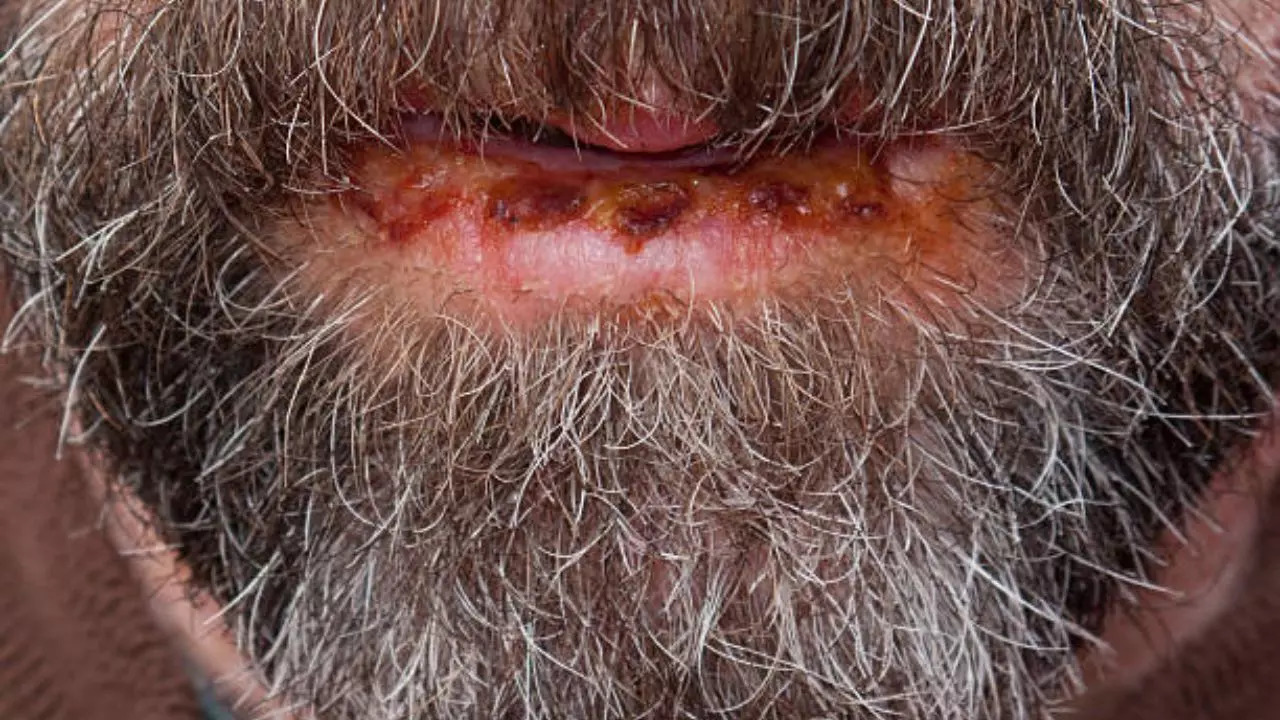While in some people oral cancer spreads quickly, in others it progresses at a slow or moderate rate.
Lip cancer is a type of oral cancer that begins in the cells of the lips. It develops in the squamous cells or flat cells that line certain oral and facial structures and that is why experts say it is diagnosed in the early stages. While it is highly treatable if lip cancer is diagnosed early, it accounts for about 0.6 percent of all cancers in the United States. According to experts, about 40,000 cases are diagnosed worldwide each year.
What does lip cancer look like??
Doctors say lip cancer mostly resembles mouth sores that don’t heal properly. People with fair skin have reddish sores, and those with darker skin have a dark brown or grayish color. According to experts, lip cancer lesions can look a lot like lip sores when they first appear in the affected area. While the sores heal over time, lip cancer doesn’t go away and the infection persists for a long time.
How fast does lip cancer spread??
According to experts, the progression of lip cancer varies from person to person. While in some people this cancer spreads quickly, in others it progresses at a slow or moderate pace.
Studies indicate that the progression of lip cancer also depends on the location of the tumor and the stage it is at when treatment begins. According to Healthline, a 2017 study indicated that lip cancer took an average of 10 to 12 months, even after treating the primary tumor, to spread locally, regionally, or to distant structures. Some metastases developed in just three months.
Where does lip cancer metastasize?
Doctors say that if left untreated, lip cancer spreads to other parts of the body, including:
- Lymph nodes
- Maxillary
- Other tissues inside the mouth
- Lungs and other parts of the body
Signs and symptoms of lip cancer
Some signs and symptoms of lip cancer include:
- A persistent sore or small ulcer on the lip that does not heal.
- A thick lump on the lip
- White or red spots on the lip.
- Extreme pain, swelling, and other sensations in the lip.
- Bleeding lip
- Changes in the color and texture of the lips.
- Difficulty swallowing and moving the jaw.
- Swollen lymph nodes in the neck
What causes lip cancer??
According to experts, there are many factors that dramatically increase the risk of developing the disease, some of which include:
- Tobacco use, including smoking cigarettes, cigars, pipes or bidis.
- Excessive alcohol consumption
- Excessive exposure to the sun
- Have clear skin
- Being over 40 years old
- Having the human papillomavirus or HPV
- Having a weak immune system
Disclaimer:
The information contained in this post is for general information purposes only. We make no representations or warranties of any kind, express or implied, about the completeness, accuracy, reliability, suitability or availability with respect to the website or the information, products, services, or related graphics contained on the post for any purpose.
We respect the intellectual property rights of content creators. If you are the owner of any material featured on our website and have concerns about its use, please contact us. We are committed to addressing any copyright issues promptly and will remove any material within 2 days of receiving a request from the rightful owner.

